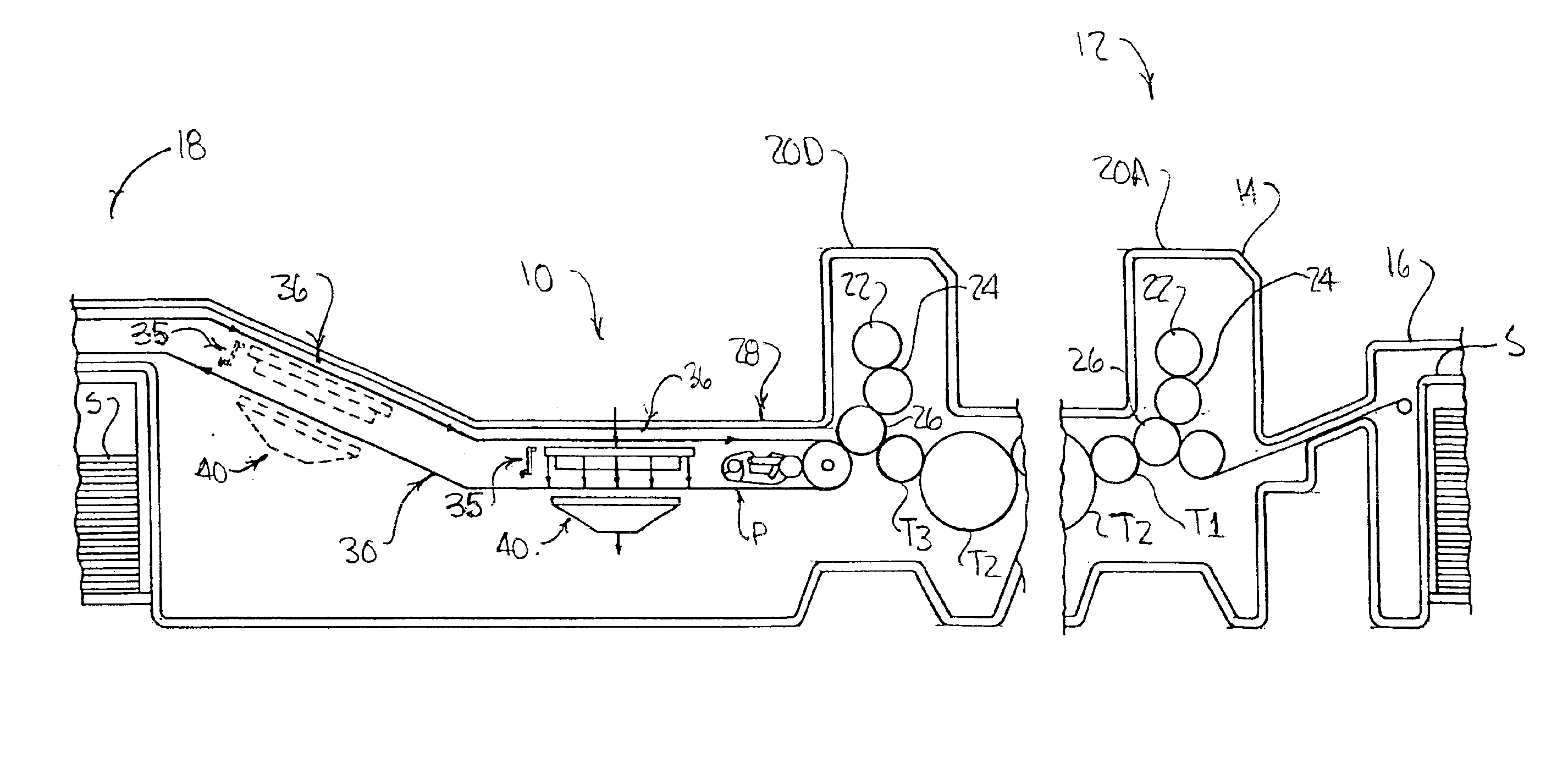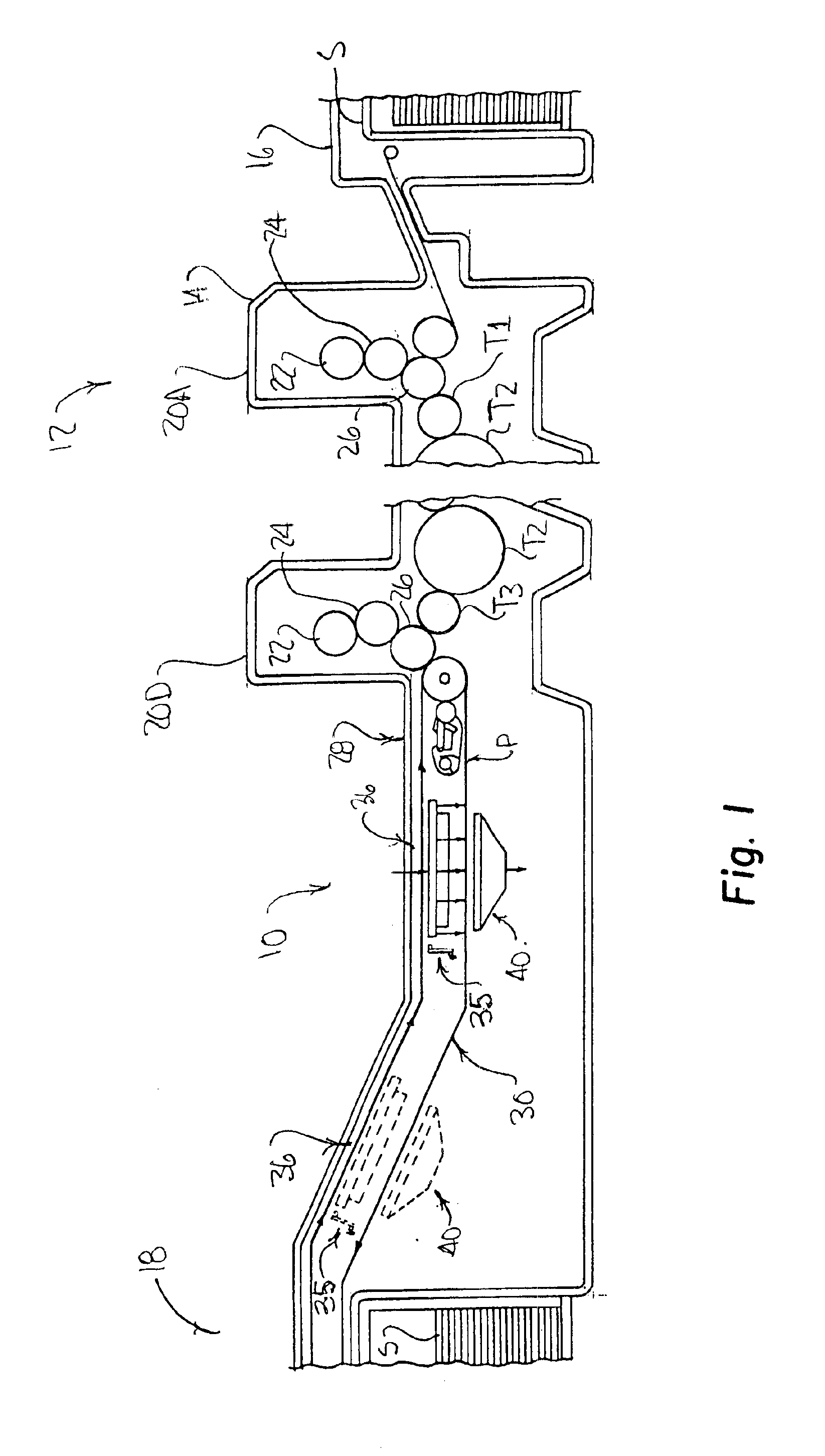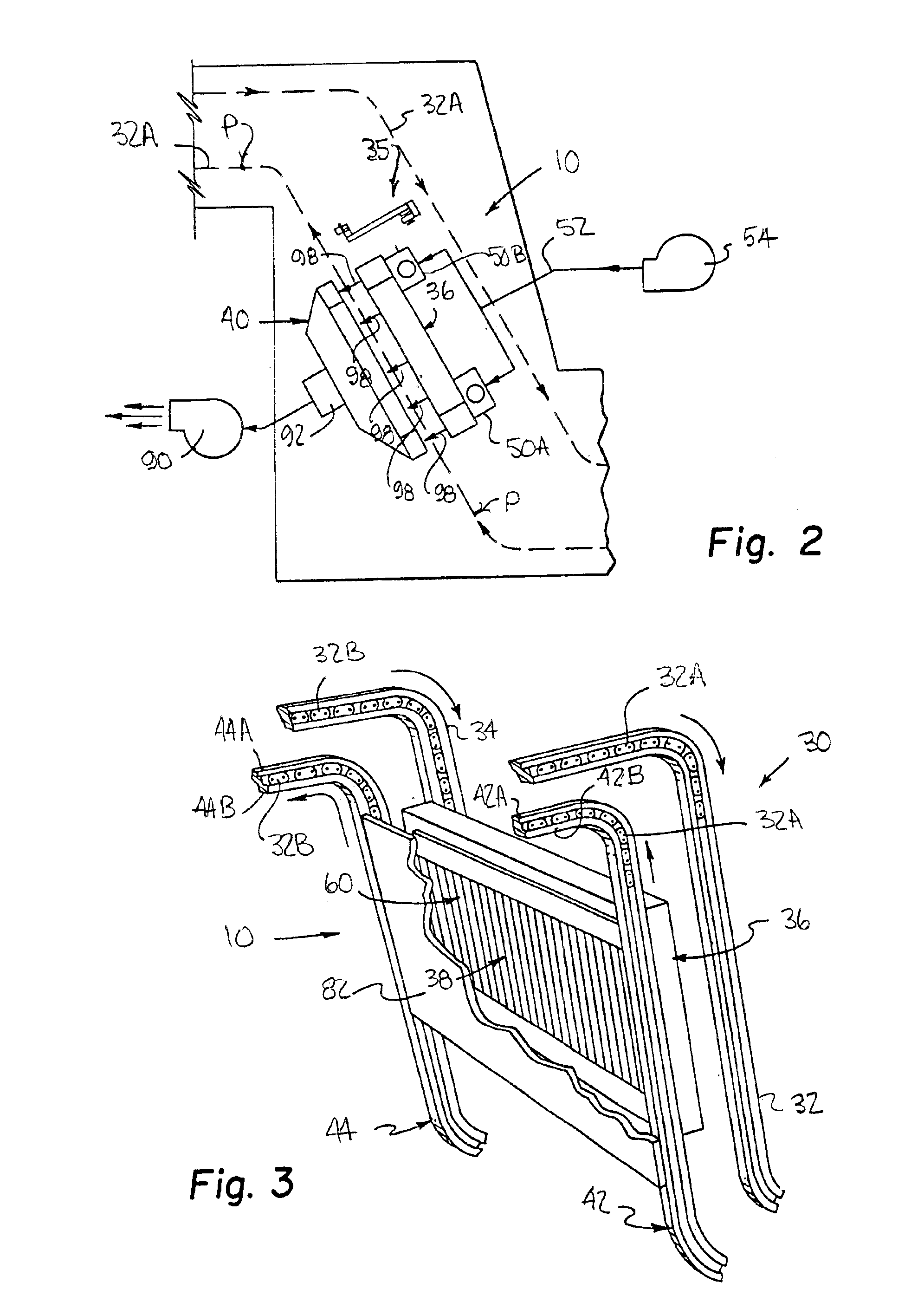Power saving automatic zoned dryer apparatus and method
a dryer and automatic technology, applied in the field of dryers, can solve the problems of unsatisfactory use of spray powder, rough printing surface of sheets, interference with good printing quality, etc., and achieve the effects of saving energy, and eliminating or greatly reducing the need for spray power
- Summary
- Abstract
- Description
- Claims
- Application Information
AI Technical Summary
Benefits of technology
Problems solved by technology
Method used
Image
Examples
Embodiment Construction
As used herein, the term substrate refers to printed sheets or printed web stock. The term heated area refers to an area on the substrate heated by an individual zone and may also be referred to as a band, an imaginary band or a heated band. The heated areas run the full length of the sheet in the longitudinal direction of the press and are segmented laterally as individual bands or strips lying adjacent to each other across the width of the substrate. Enough heating zones should be provided to cover the full width of the substrate.
Referring now to FIG. 1, the dryer assembly 10 of the present invention will be described as being used for drying freshly printed substrates, either sheets or web stock, which have a protective and / or decorative coating or printing which has been applied in a sheet-fed or web-fed, rotary offset, rotogravure, flexographic printing press or even in digital printing. In this instance, dryer 10 of the present invention is mounted on the guide rails of the de...
PUM
 Login to View More
Login to View More Abstract
Description
Claims
Application Information
 Login to View More
Login to View More - R&D
- Intellectual Property
- Life Sciences
- Materials
- Tech Scout
- Unparalleled Data Quality
- Higher Quality Content
- 60% Fewer Hallucinations
Browse by: Latest US Patents, China's latest patents, Technical Efficacy Thesaurus, Application Domain, Technology Topic, Popular Technical Reports.
© 2025 PatSnap. All rights reserved.Legal|Privacy policy|Modern Slavery Act Transparency Statement|Sitemap|About US| Contact US: help@patsnap.com



